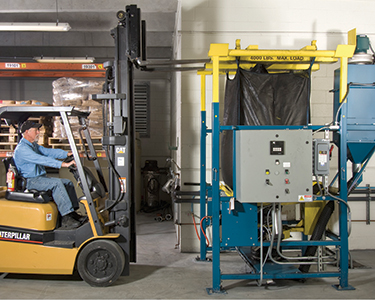 Click to enlarge
Click to enlargeCity of Lafayette operator forklift-loads bag-lifting frame onto bulk bag discharger.
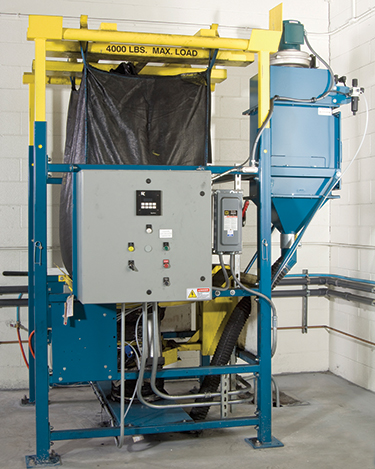 Click to enlarge
Click to enlargeUpper level: Bulk bag discharger with control panel and BAG-VAC® dust collector.
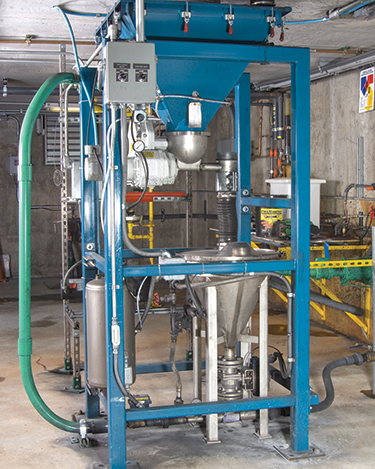 Click to enlarge
Click to enlargeLower level: Frame holds 5 cu ft (0.14 cu m) capacity receiving hopper from which a volumetric feeder meters powder carbon to a washdown hopper and liquid slurry eductor where the carbon blends with fresh water (green tube) flowing to the clarifier.
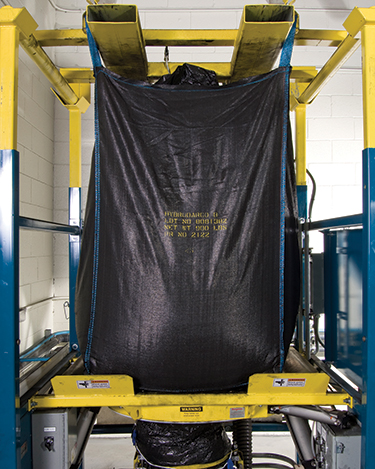 Click to enlarge
Click to enlargeBulk bag is suspended from a lifting frame that rests in receiving cups atop each of four frame posts. Pneumatically-actuated FLOW-FLEXER® plates beneath the left and right bottom edges of the bag hinge up and down at timed intervals to loosen compacted materials and raise the bottom of the bag into a steep V shape, promoting total discharge through the bag spout.
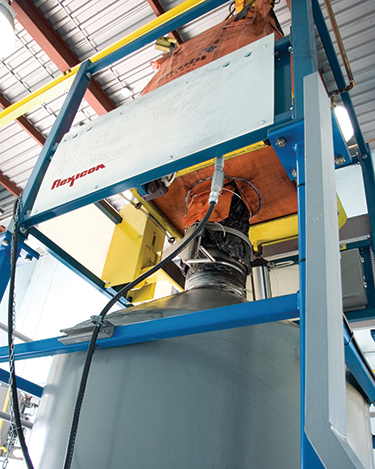 Click to enlarge
Click to enlargeA SPOUT-LOCK® clamp ring creates a high integrity seal between the bag spout and a TELE-TUBE® telescoping tube that maintains constant downward tension on the bag, promoting complete, dust-free discharge.
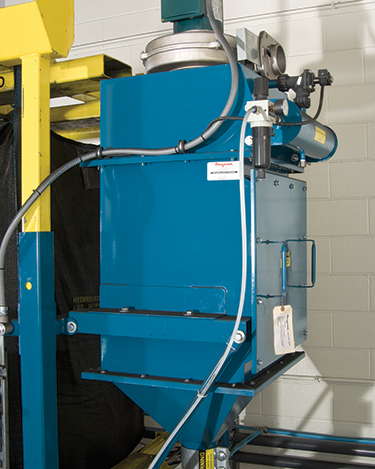 Click to enlarge
Click to enlargeThe airtight system features a side- mounted BAG-VAC® dust collector that draws displaced air and dust from the hopper and collapses empty bags dust-free.
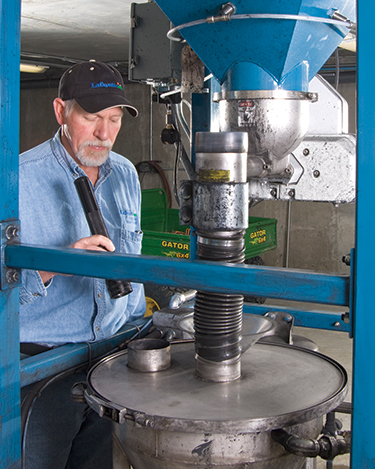 Click to enlarge
Click to enlargeOperator inspects powdered carbon entering the washdown hopper.
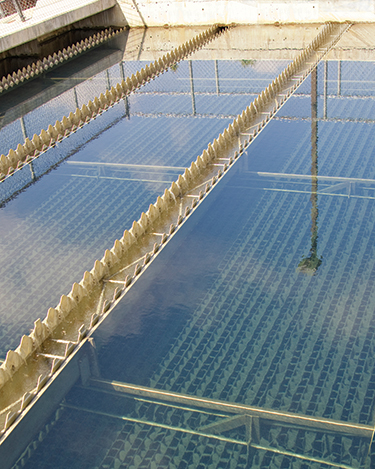 Click to enlarge
Click to enlargeWater flows from the sedimentation basin, through the powdered carbon addition system, and into the distribution system.
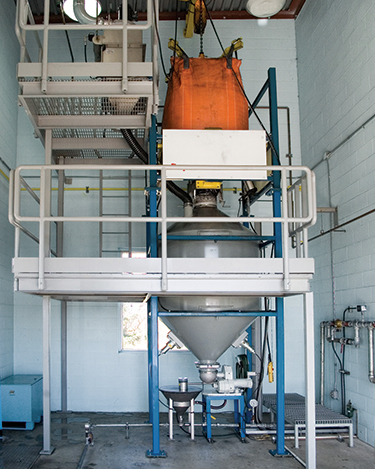 Click to enlarge
Click to enlargeAt City of Swift Current, bag is loaded onto half-frame bulk bag discharger from ceiling-mounted monorail. The frame below the discharger incorporates a 2000 lb (900 kg) capacity hopper, volumetric feeder, washdown hopper, and a liquid slurry eductor that draws carbon powder into a water stream.
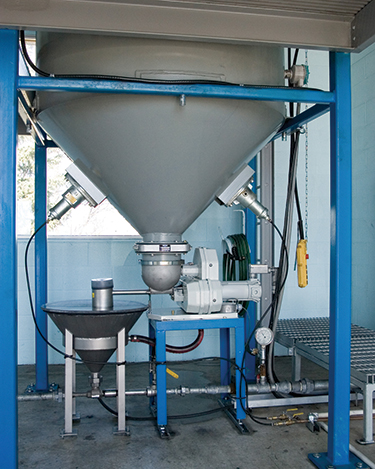 Click to enlarge
Click to enlargeBottom frame consolidates a receiving hopper, volumetric feeder, washdown hopper, and liquid slurry eductor.


 Click to enlarge
Click to enlarge Click to enlarge
Click to enlarge Click to enlarge
Click to enlarge Click to enlarge
Click to enlarge Click to enlarge
Click to enlarge Click to enlarge
Click to enlarge Click to enlarge
Click to enlarge Click to enlarge
Click to enlarge Click to enlarge
Click to enlarge Click to enlarge
Click to enlarge